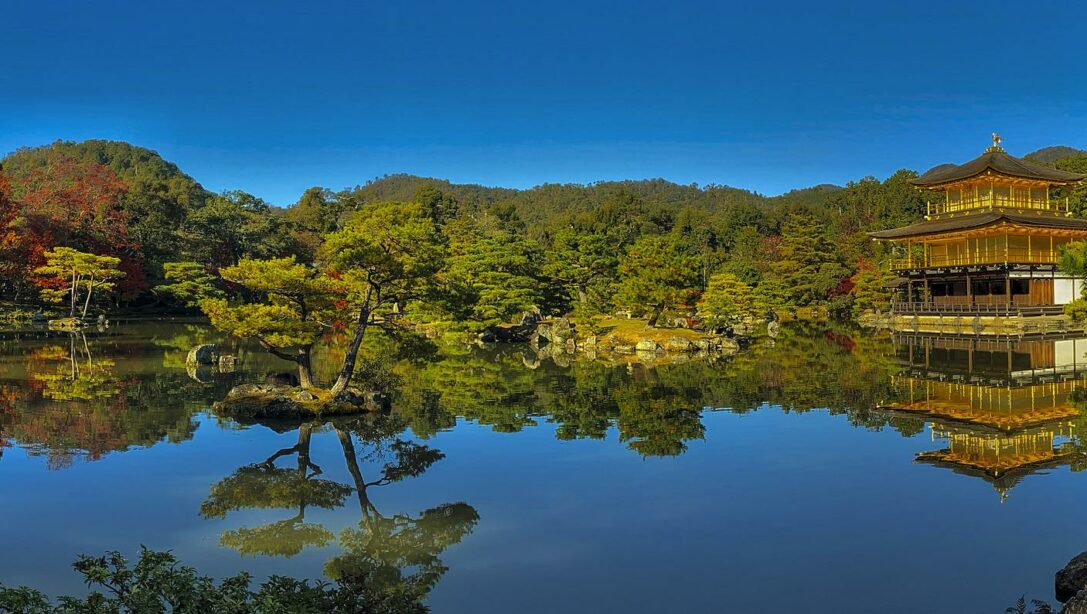Japanese gardens are a relaxing and contemporary choice for a garden. Full of grace and serenity, they can act as a retreat from day-to-day life and are a low-maintenance alternative for your outside space.
We have put together a guide for you to add a touch of ‘Japanese contemplation’ to your garden.
What is a Japanese garden?
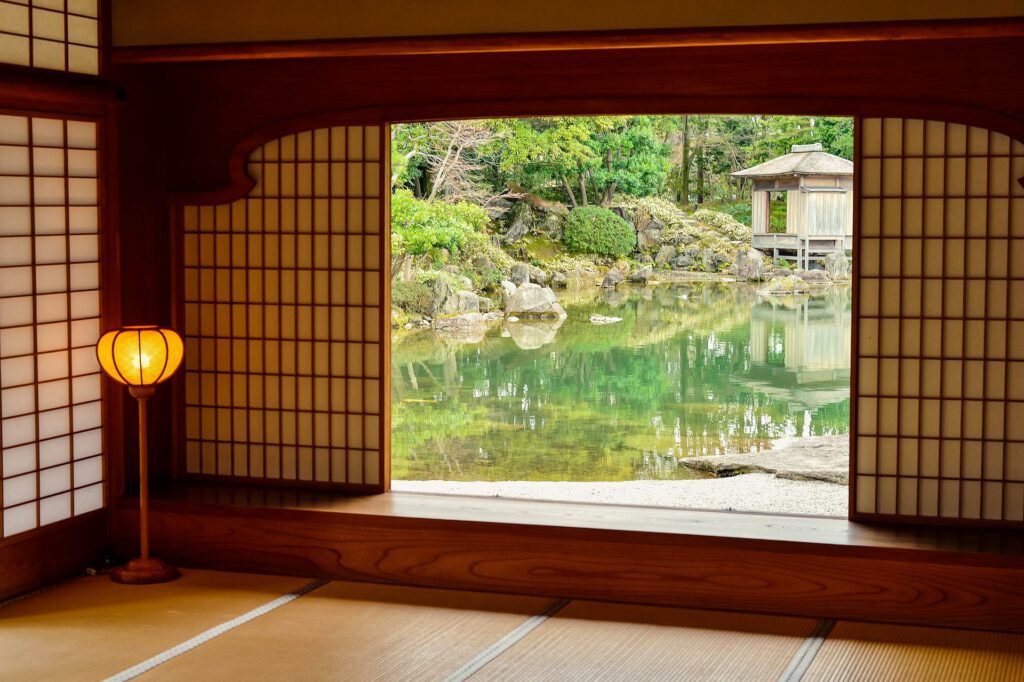
A Japanese garden is a place of elegance, bursting with plants of year-round interest and high executional standard. The design of a Japanese garden can be appreciated from the inside of the home and any door or window should frame the stunning environment. Japanese gardens are very carefully thought out and planned. There are three forms that a Japanese garden should follow during this process:
- Plants: to showcase the shades of each season,
- Natural stone: to highlight the architectural style of the landscape,
- Water: to vitalise the garden.
Japanese Garden Design Ideas
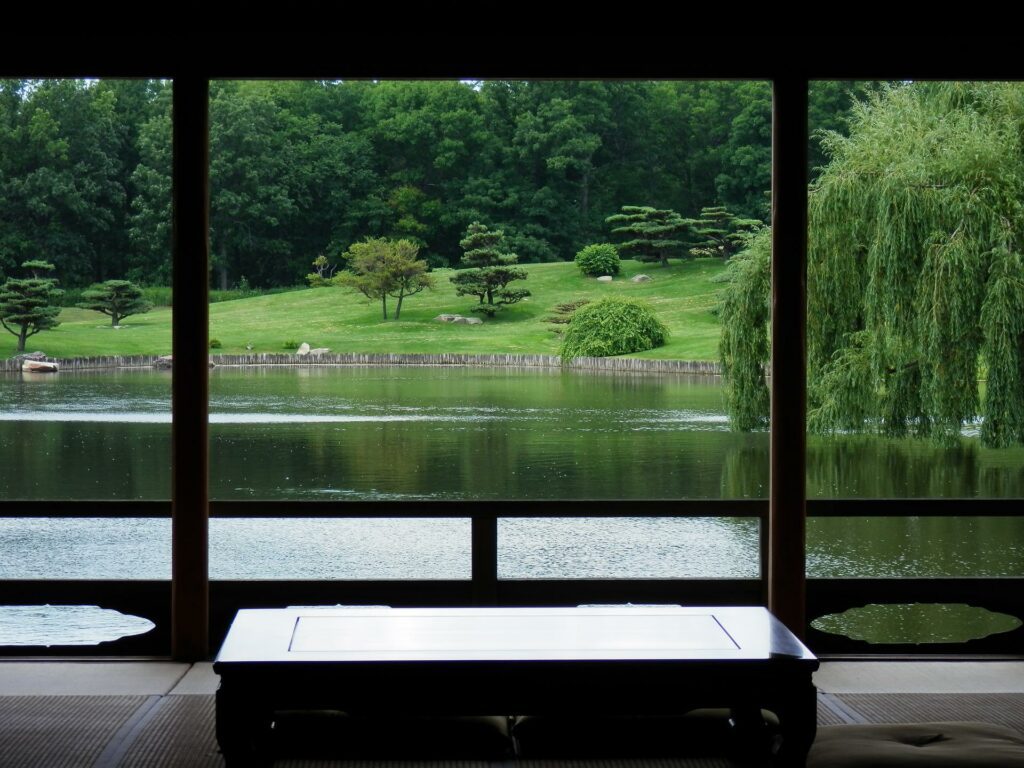
Water Focal Point
Whilst we can’t all have a large pond in our back garden, there are a few items we can add to create the energy of a Japanese garden. A water feature or small stream will represent the same calming effect and peacefulness as a vast reservoir.
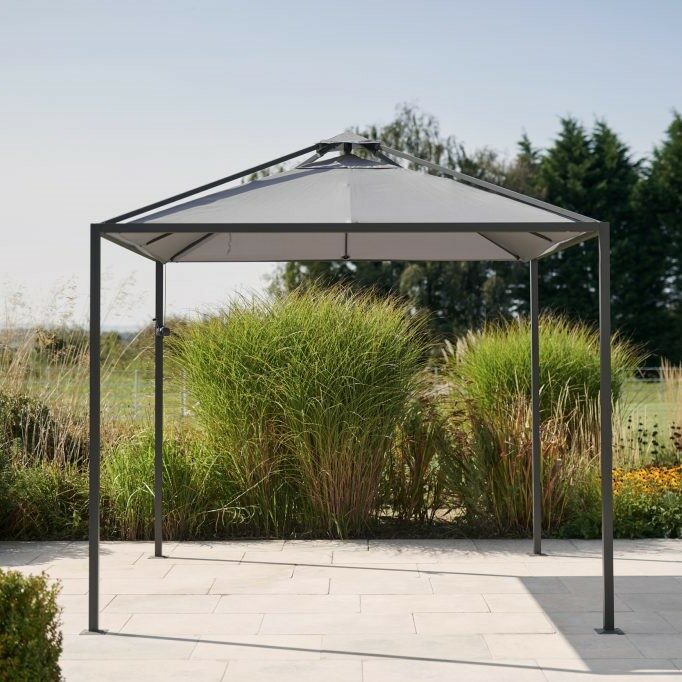
Pagodas
Pagodas are essential in Japanese culture. Often found in Buddhist gardens, they are a wonderful architectural nod to signify sacred mountains. They are also a fantastic feature for a garden, as they can provide shade for your space.
Discover our Hillier Panalsol Pagoda which can be added to your Japanese tranquil garden.

Lanterns
Integrating lights into your garden can really help set the mood. In Japanese culture, the light within the lantern symbolises Buddha’s wisdom that supported enlightenment, thus escaping darkness.
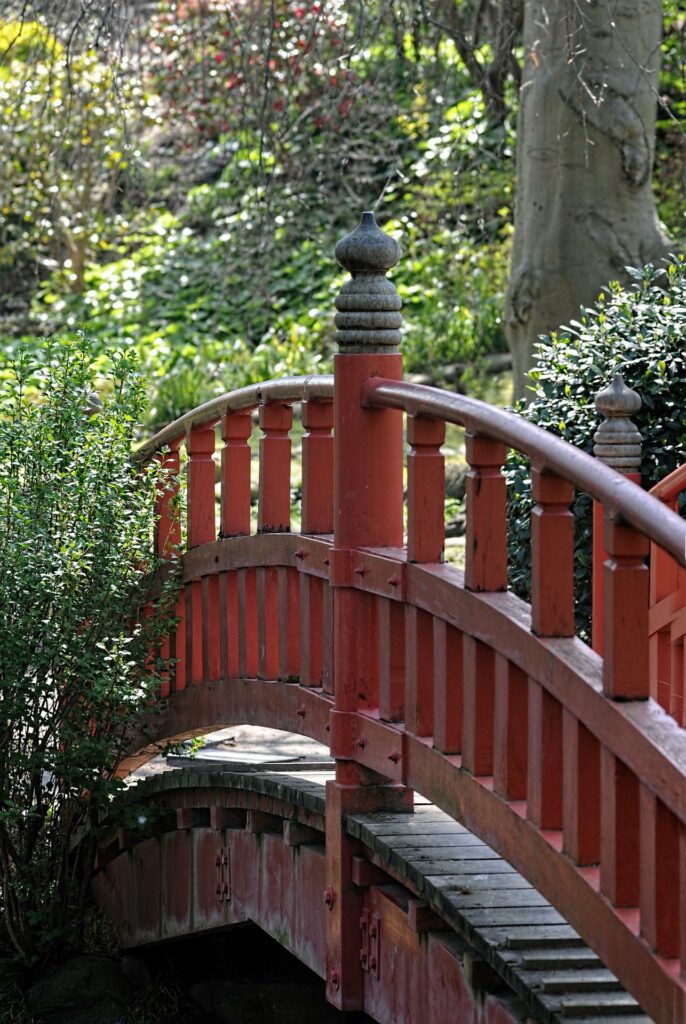
Bridges
Adding a bridge to a Japanese style garden can act as a wonderful talking point and is a unique way to connect two spaces together. Bridges are spiritually significant, as it’s thought that when they are crossed, it will cleanse oneself of any burdens before entering the afterlife and uniting with nature.

Sculptural Forms
A Japanese garden is full of character, and this doesn’t stop at ornaments. Plants and trees, shaped by topiary art, can be meticulously placed to resemble bonsai trees. The bonsai tree represents balance and mature creation.
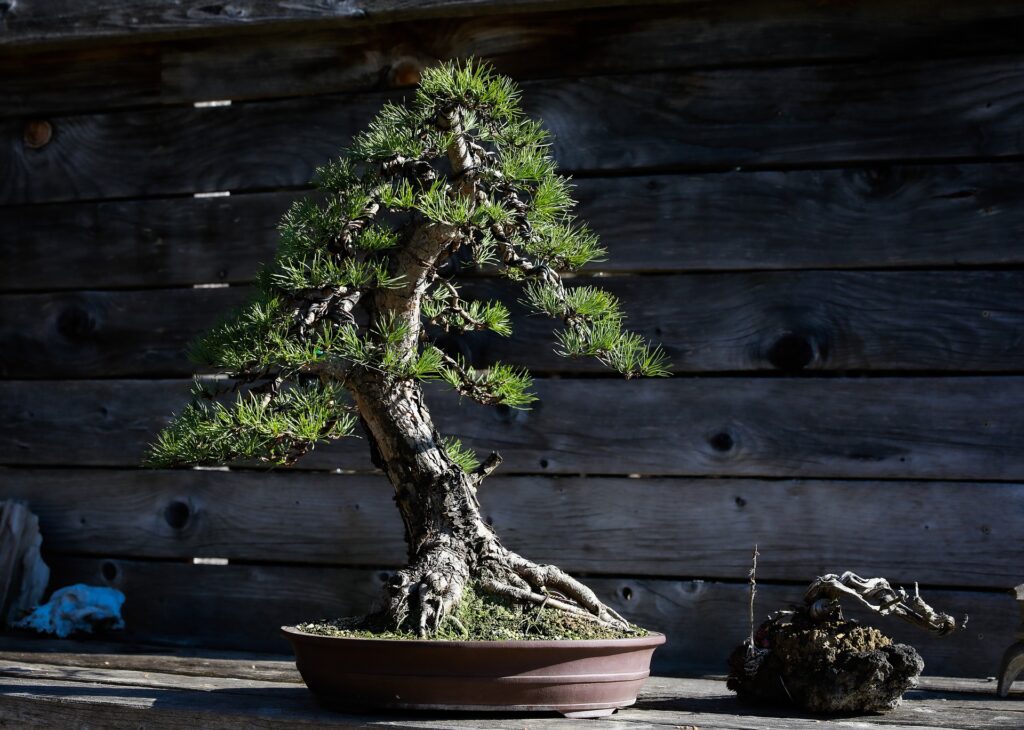
Bold Backdrop
Colour plays an important role in the Japanese garden and, because of this, it’s vital that these have a dark background to stand out on. Black is a great colour to go for as it will make the other garden colours pop.
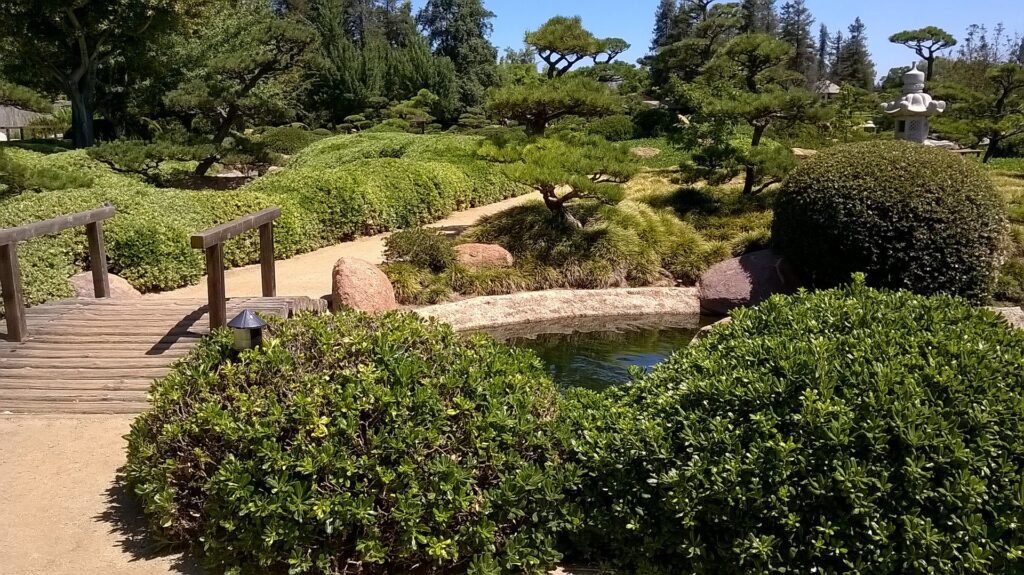
Pathways
Meandering pathways are a brilliant way of showcasing your Japanese garden. Leading from different sections, pathways can symbolise a walking rhythm to your space. By using variable pathways lengths and uneven ground, it forces the idea of walking with care around the garden and ultimately makes you pause and appreciate the scenery around you.
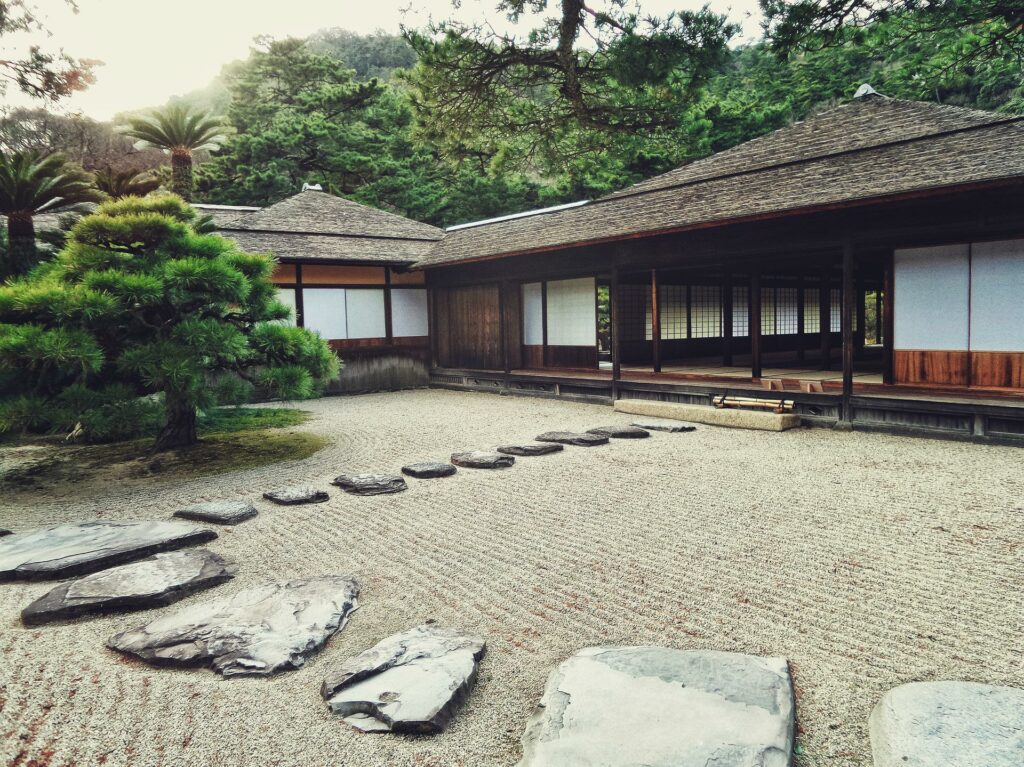
Gravel
Gravel is a great way of keeping your space low-maintenance and a fantastic highlight of the Japanese landscape. The gravel can be raked into different designs to add interest all year long.
Japanese Colour

Colour is very important in a Japanese garden, and each colour provides its own meaning:
- White: represents spirituality, truth, and purity. It also provides a simplicity to any outside space.
- Black: represents mystery and elegance. Black also adds formality to a garden and makes a great background.
- Red: represents strength and power. It can also symbolise sacrifice or joy.
- Blue: represents tranquillity, safety, and stability. It’s a dignified colour to add to your garden.
- Purple: represents wisdom and is a noble colour to feature.
- Orange: represents happiness and love.
- Green: represents the natural world and freshness. It is thought to bring luck to your garden.
- Pink: represents spring, life, and the youthfulness of your outside space.
How to Make a Japanese Garden
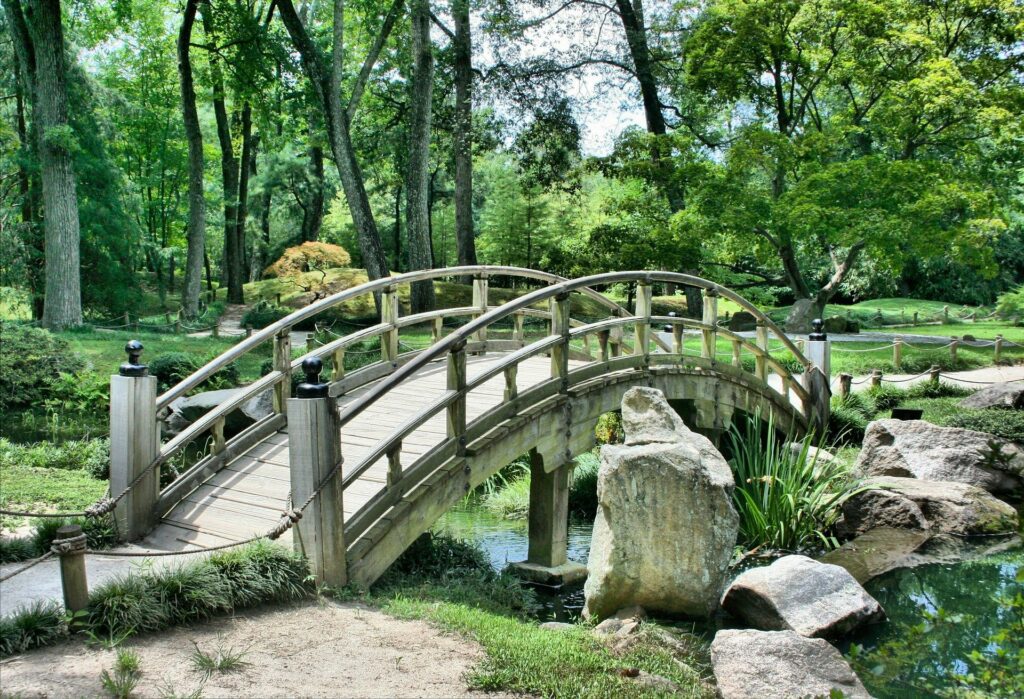
To truly capture the essence of a Japanese garden, make sure to carefully design the space before beginning to plant or build structures. The point of a Japanese garden is to take your time and appreciate the space around you. This is true of the initial process as well as the ongoing care.
Prune your plants neatly and uniformly and be certain that your garden looks like natural art as opposed to staged. This will help to inspire discovery and serenity.
Plants for a Japanese garden
Cherry trees
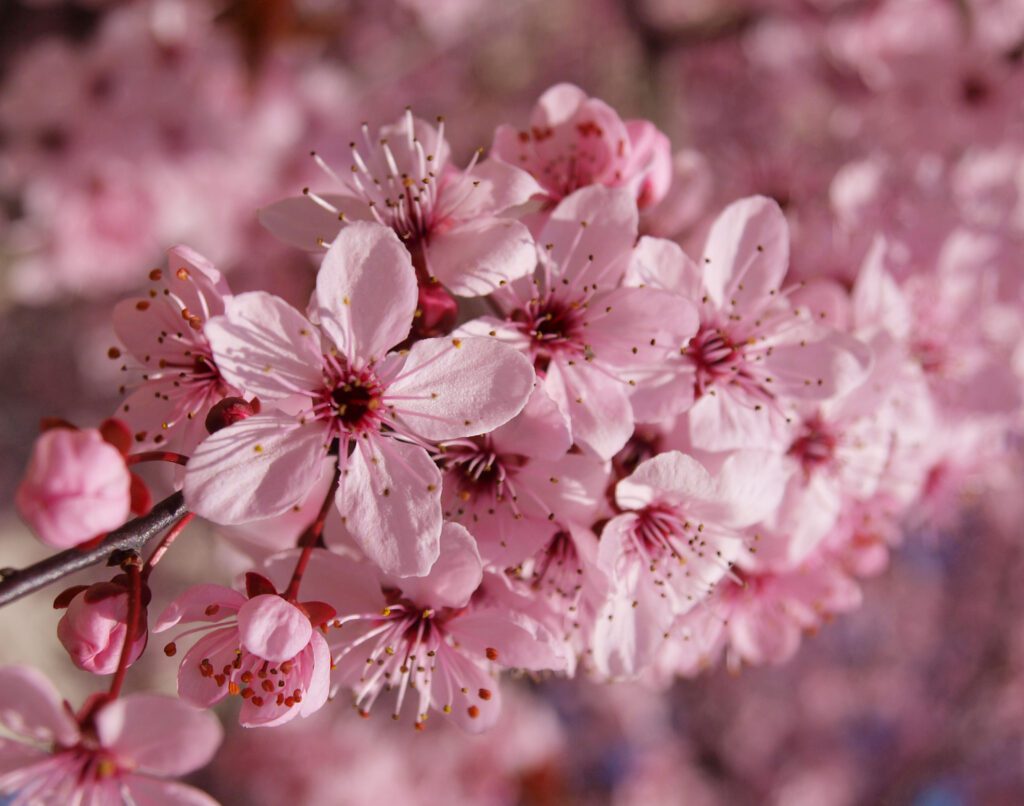
Cherry trees are the joys of spring in a Japanese garden. Not only do they produce a stunning and delicate flower, but they also give an ornamental feature to the garden.
Bred in Japan and introduced to Britain in the 19th century, these graceful trees are splendidly easy to grow. For the Japanese, the blossom of flowering cherries symbolises the transient nature of life itself, and it is ritually revered on a national scale. The practise of ‘Hanami’, or flower-viewing, dates back hundreds of years.
Acer palmatum
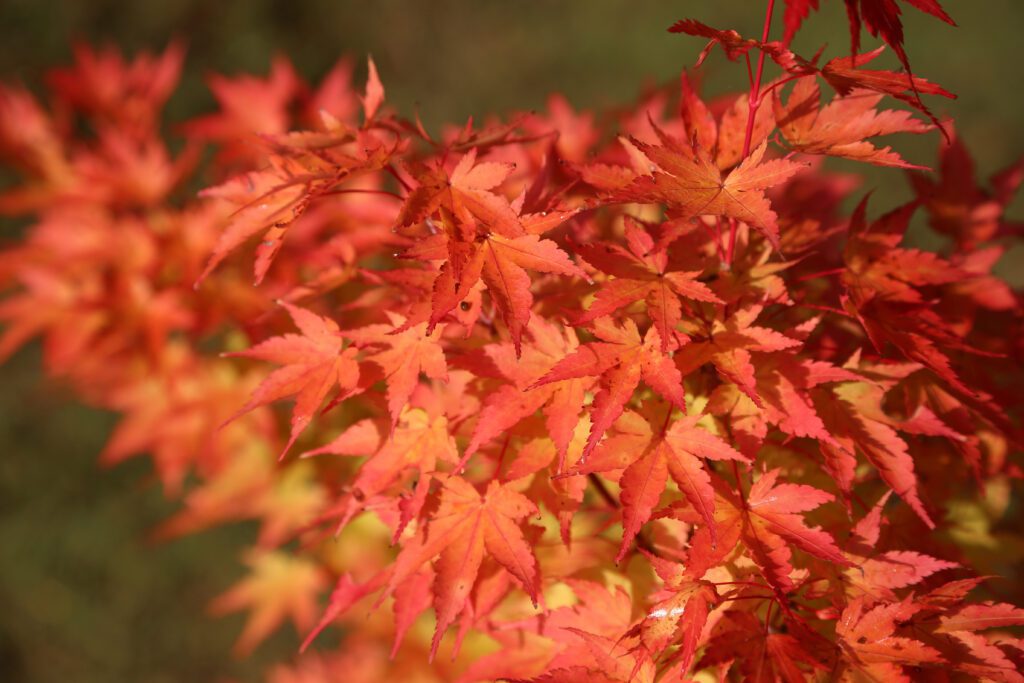
The Acer palmatum, also known as the Japanese maple, is a species of Japanese and wider Asian origin. It is typically low-maintenance and easy to grow, creating a dramatic impact in Japanese style gardens.
Lilies

Lilies are ideal for a Japanese garden with their large trumpet-shaped flowers. They create a delightful fragrance throughout the summer months. It looks stunning in ornamental containers or in raised beds.
Azalea
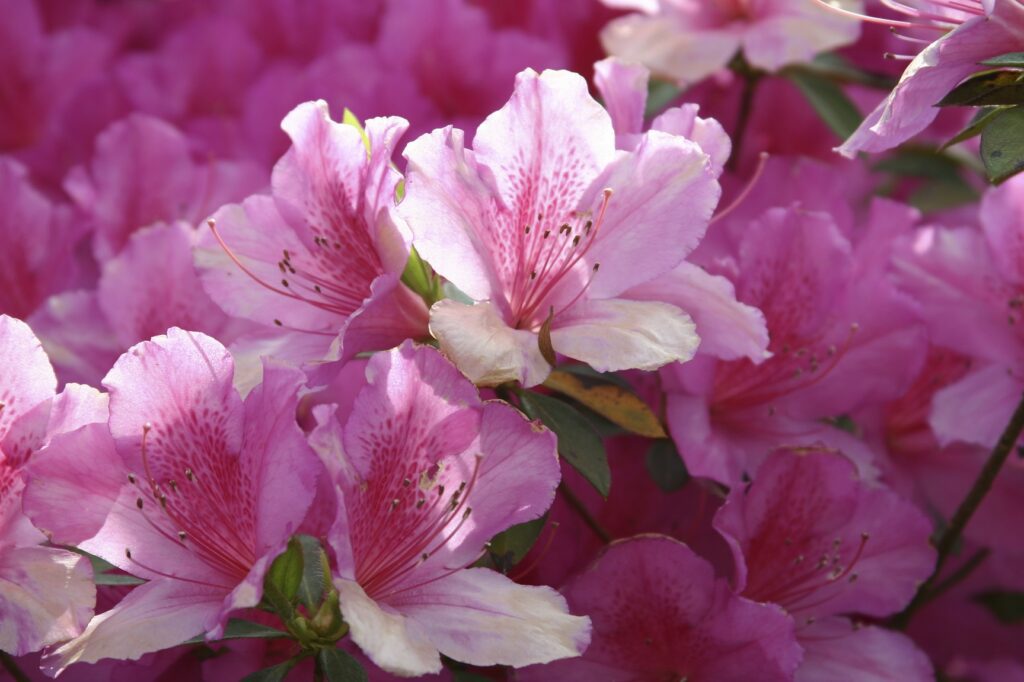
Azaleas are an easy to care for genus of shrubs, either evergreen or deciduous, and available in many colours. Some are even fragrant.
Azaleas are good for statement planting, which makes them brilliant additions to a Japanese garden.
Creating Your Own Japanese Garden
By incorporating Japanese elements into your outdoor space, you can transform it into a serene and contemplative retreat. You don’t have to go with a full Japanese theme, even adding only a touch of Japanese-inspired landscaping and ideals can have a strong transformative effect.
From creating a water focal point to incorporating symbolic elements like lanterns and bridges, each detail contributes to the overall harmony and beauty of the space. With enough careful planning and attention to detail, you can cultivate a tranquil garden that embodies the essence of Japanese design principles.
If you’re looking for more ideas or seeking inspiration and resources to create your dream garden, be sure to visit our dream garden hub.


